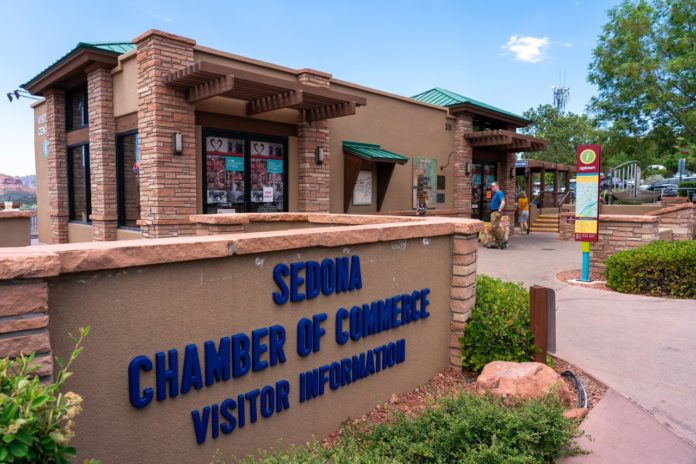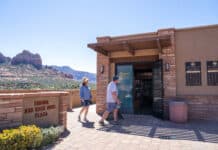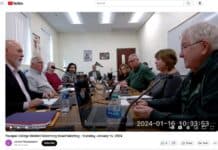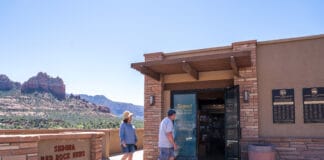
In 2019, Kenya’s Lawrence Cherono won the famed Boston Marathon in a time of 2 hours, 7 minutes and 57 seconds. By contrast he could have run two marathons by the time the Sedona City Council completed its meeting on Wednesday, May 26.
The topic of the four-and-a-half hour meeting was for discussion and to provide direction regarding the Sedona Chamber of Commerce’s 2021- 2022 work plan and budget.
While there was little consensus among council regarding many of the line items discussed, council members agreed without voting to direct City Manager Karen Osburn to meet with Sedona Chamber President and CEO Candace Carr Strauss in the upcoming weeks to review the proposed budget, which currently sits at $2.4 million.
The chamber will then return in July for possible approval.
“It is not typical for us to ever go through a line item with this level of detail,” Osburn said. “But, I do think we needed to this year because in year’s past, there was one over-arching mission and that was to get the right visitors at the right time and to some extent, more of that. In year’s past, we knew that’s what the chamber does and what they do very well. We’re not in a position to micromanage how they do it.
“This year, things were much different because the direction was, we really need a one-year pause on solicitation of new visitation. We talked about sustainable tourism and an in-market plan of once they’re here. Yes, we should educate them [tourists] and let them know how to be good stewards of the land and good visitors while they’re here.”
Osburn said the message from council to her over the last two months has been clear — pause destination marketing for at least a year. This way it will be made more clear if the recent surge in tourism here is a blip on the radar as other destinations begin to reopen or if it’s here to stay.
Council went over some of the line items one-by-one with several members pointing out those they feel appear to have a marketing aspect to them.
Council members stated several times by some that anything with a hint of marketing needs to be pulled from the chamber’s plan.
“The city and chamber are partners as stewards of Sedona for all of her place consumers,” Strauss said. “Partnerships like these are critical to all of our success. We stand ready to get to work with the council’s direction under the Sustainable Tourism Plan as destination managers during these unprecedented times.”
Some of the chamber’s key takeaways, as presented at the meeting, for the upcoming budget include the following:
■ No guarantees as Sedona returns to a post- COVID-19 environment. The Sedona Chamber of Commerce and Tourism Bureau is restoring previous meeting sales and travel trade activities following their complete halt during the pandemic, as well as preparing for the comeback of local events.
■ Sedona is a destination. The visitor-based economy contributes 80% of the city’s sales tax revenue and 100% of bed tax revenue to the city of Sedona’s general fund. The first nine months of Fiscal Year 2020-21 have been the highest grossing on record, but again there is no guarantee that this trend will continue with the world opening back up beginning mid-June.
■ The chamber’s destination market budget comes entirely from bed tax revenue charged on overnight stays by hotels and compliant short-term rentals. In FY 2020-21, this amounted to only 2% of the city’s total budget of $51.2 million. The chamber’s operations budget is funded by its members’ dues, not the bed tax.
■ Hotel occupancy during peak periods over the past decade has remained relatively constant while off-peak periods have increased approximately 5%; this is the goal of the chamber’s outside marketing and destination marketing efforts. For FY 2021-22, Council is not funding any destination marketing.
■ Since March 2020 due to the impacts of COVID-19, hotel occupancy has been down or flat — except October 2020 which was up 3% — while average daily rates increased. The large influx of visitors is again attributed to short-term rentals and in state visitation, which went from 40% to 53% from 2019 to 2020.
■ Short-term rental deregulation in 2017 unleashed a 2,500-room “hotel” on Sedona with no management capability due to no parking requirements, no employee housing nor “payment in lieu of” benefits like those a new hotel would pay, nor sufficient trash services, and the resulting increase in visitation and occupancy is directly correlated.
This is not the hospitality industry’s doing but homeowners and investors. Only 623 traditional hotel room nights have been added over the past 20 years, failing to meet demand. Meanwhile at least 1,238 short-term rental units were available as of the end of April — an amount equal to the number of hotel rooms in the market — have opened their doors.
■ As a result of COVID-19, there has been an increased emphasis on collaboration among city staff and other municipalities and counties, the U.S. Forest Service, the Sedona Chamber of Commerce, private industry, fellow nonprofits and residents.




















